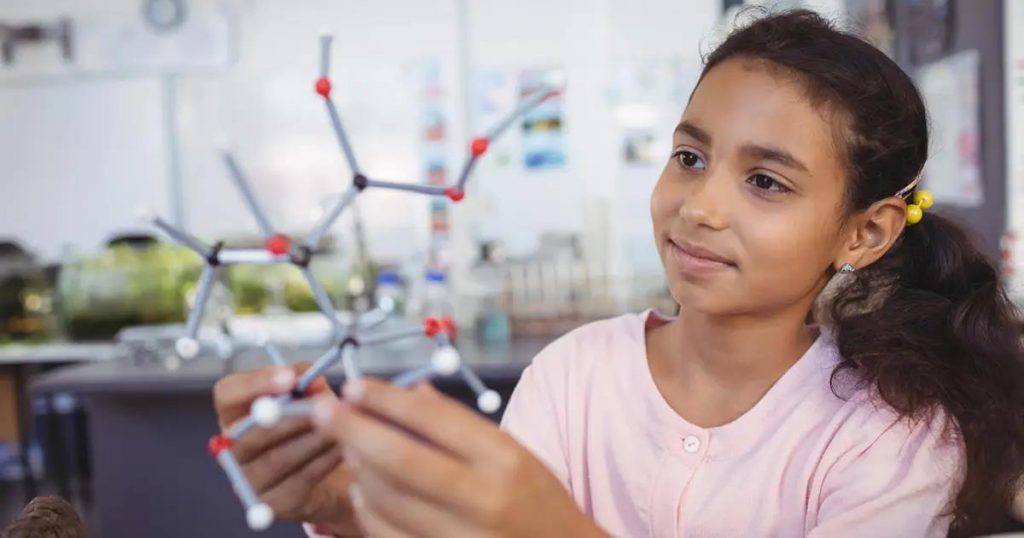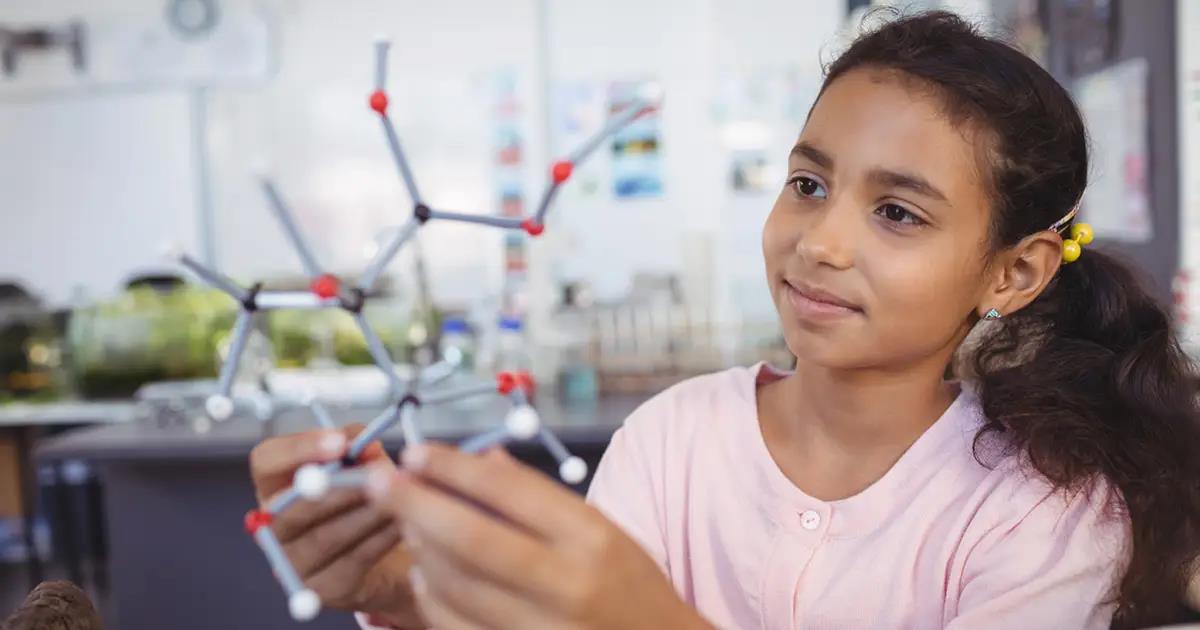
STEM project based learning introduces your child to engineering robotics for kids and helps them foster ingenuity and creativity, encourages experimentation through STEM real world engineering projects, builds resilience, encourages knowledge application, encourages teamwork, teaches problem solving and encourages the use of technology. Growing your own crystals is one of the STEM real world engineering projects that you can easily try at home. This article explains three methods for growing crystals.
Quick Crystal Cup
Supplies
- 250 ml Beaker
- Food coloring pack
- Epsom salt (Magnesium sulfate)
Instructions
- Add ? cup of hot tap water and ? cup of Epsom salt to the beaker and stir for one minute.
- If you want to grow colored crystals then add a few drops of food coloring.
- Refrigerate this solution for a few days.
You have crystals in your beaker.
Explanation
Hot water dissolves more Epsom salt. Crystal growth occurs due to rapid cooling in a refrigerator. Rapid cooling makes atoms of the salt come closer and stick together to form crystals. This creates a good number of small, thin crystals.
Growing Gems
Supplies
- 250 ml jar or beaker
- Pencil
- Fishing line
- A shallow dish or saucer
- Alum
- Paper towel
Instruction
- Add ? cup of hot water in a 250 ml beaker and slowly continue to add alum until you get a saturated solution (a solution in which you cannot dissolve a solute anymore). Pour a small amount of this solution (it should not contain solid material) into a saucer and leave it undisturbed for a night.
- The next morning, the dish will have crystals in a good size. Remove the solution if there is any.
- Add ? cup of water to a beaker and add alum to make a saturated solution. Pour it into a jar. Make sure that the solution does not contain solid material.
- Pick the biggest crystal to be used as a seed crystal and tie it with one end of the fishing line. Tie a pencil to another end of the fishing line.
- Suspend the crystal in the new solution with the pencil across the top of the beaker.
- Don’t let dust enter the beaker by covering it with a paper towel.
- The crystal will grow in the beaker.
Explanation
Nucleation makes the small crystals grow. A few alum molecules join to create a crystal pattern. More molecules join to form solid, visible crystals. As these crystals will compete in the same solution, they will not get big. Pick the biggest one and suspend it in the solution in another beaker. Alum molecules will join this crystal and it will grow large.
Rock Candy Sticks
Supplies
- Water: 1 cup
- White sugar: 1 ? cup
- Spoon
- Small plate
- Wax paper
- Glass
- Stove
- Saucepan
- Wooden skewers or cape pop sticks
- Several 250 ml jars or beakers
- Food coloring
Instructions
- Add water into a glass.
- Pour some sugar on the plate.
- Lay out a wax paper sheet.
- Roll each stick in sugar after dipping it in the glass.
- Tap each stick to remove excess sugar.
- Dry each stick on a sheet of wax paper.
- Add water and ? cup sugar into the saucepan.
- Stir to dissolve.
- Add ? cup sugar again and dissolve to achieve a saturated solution.
- Add ? cup sugar once more and dissolve. Don’t worry if you have some undissolved sugar.
- Put this solution on a stove to boil and keep stirring. Keep stirring until no sugar is left after reducing heat to medium-low. Now you have a supersaturated solution.
- Keep cooking and stirring until the solution becomes clear. It will take around 5 minutes.
- Let it cool until you get a slightly warm solution.
- Pour into jars and add a few drops of coloring.
- Put several dry sticks into each jar.
- Leave the jars undisturbed.
- Prevent the formation of large crystals by gently stirring each stick.
- In 6 or 7 days, you will have a lot of crystals growing on the sticks.
- Remove sticks and dry them in a clean glass.
- Wrap them in food wrap.
Explanation
As you cool the supersaturated solution, the sugar molecules start joining seed molecules, molecules on the sticks. You get nice looking, larger crystals on each stick. They are tasty to eat.
You don’t need special equipment or skills for one of the easiest real world engineering projects for STEM project based learning. There are many projects to try.???

As the editor of the blog, She curate insightful content that sparks curiosity and fosters learning. With a passion for storytelling and a keen eye for detail, she strive to bring diverse perspectives and engaging narratives to readers, ensuring every piece informs, inspires, and enriches.










